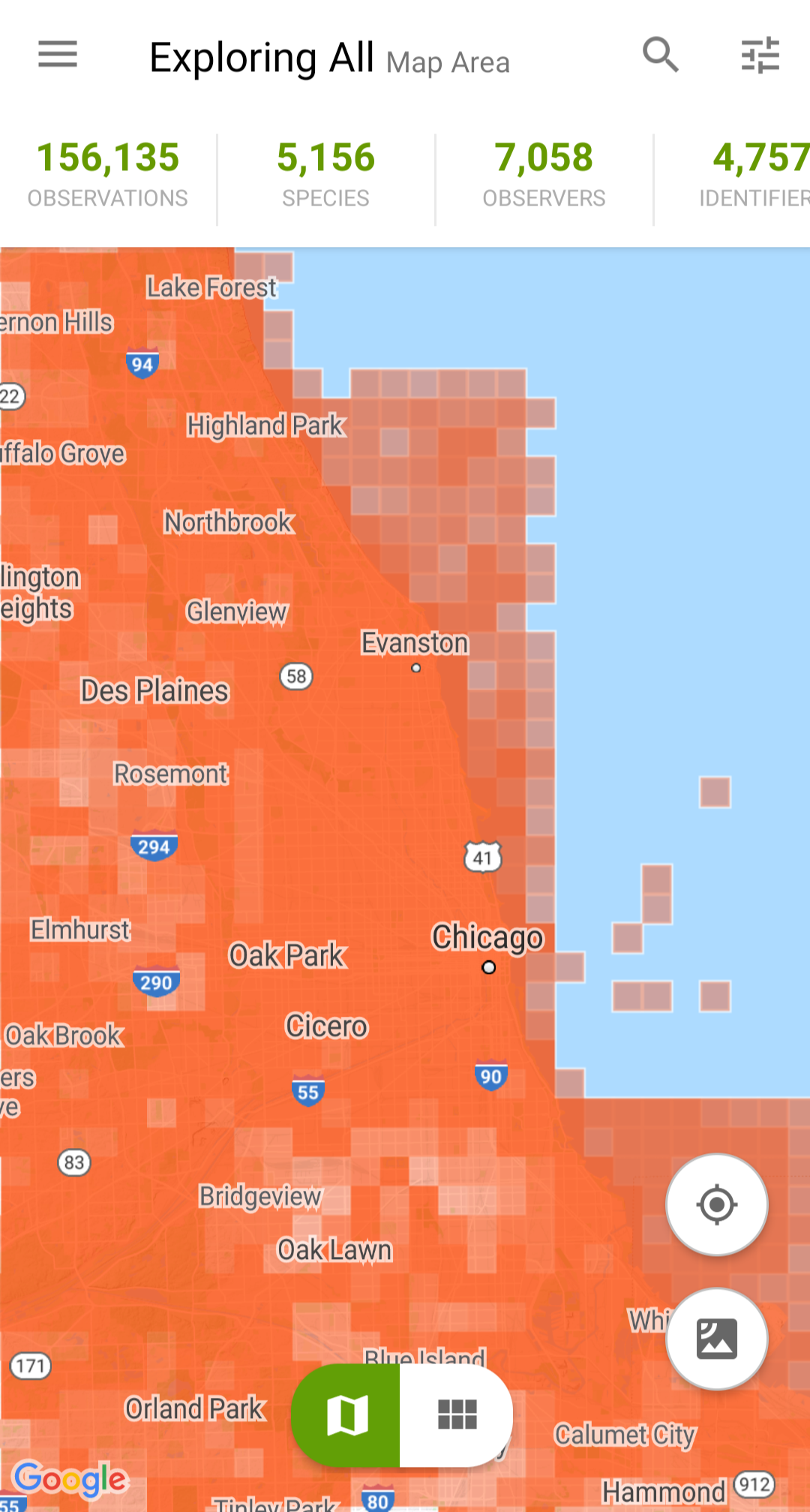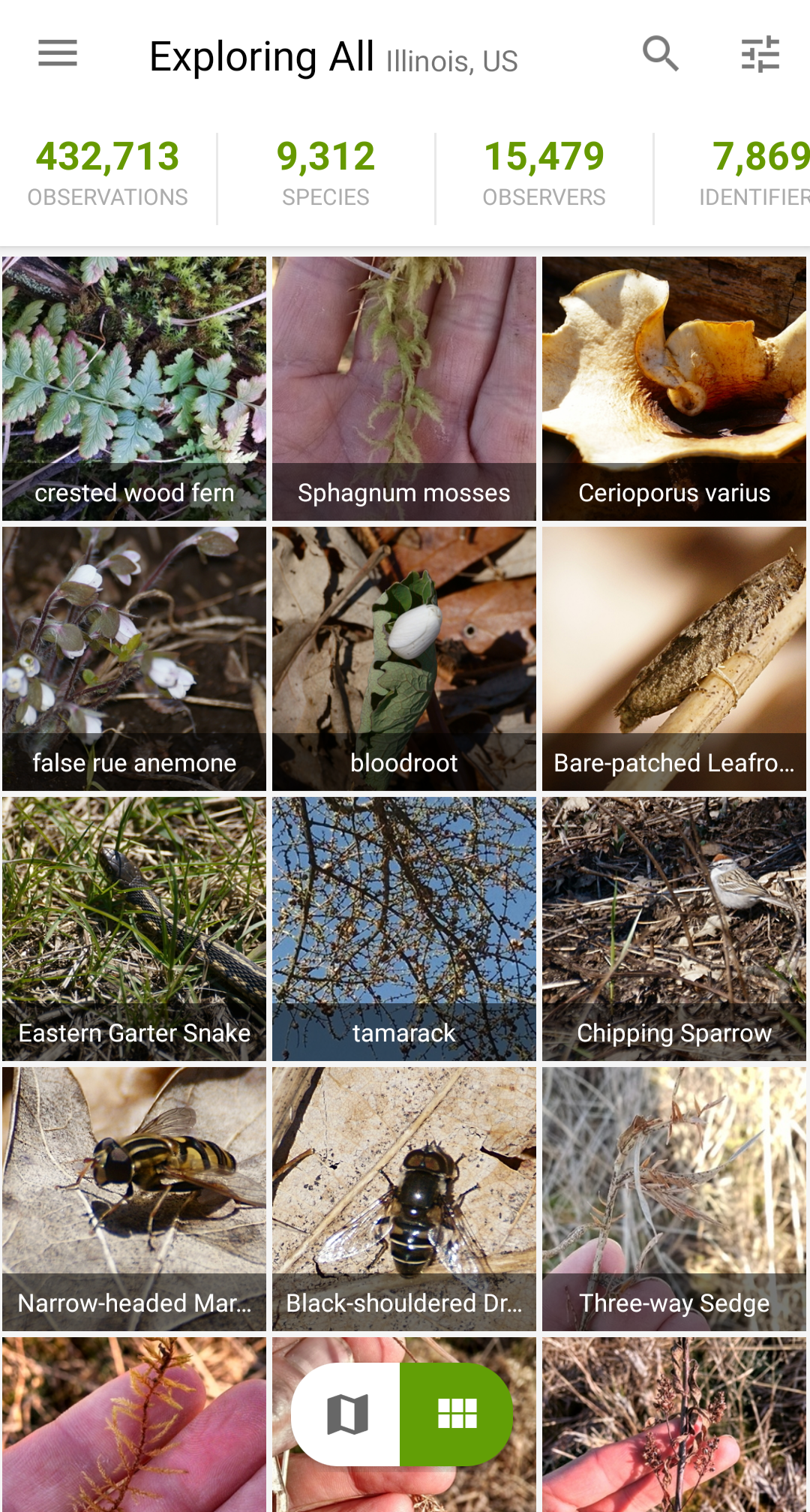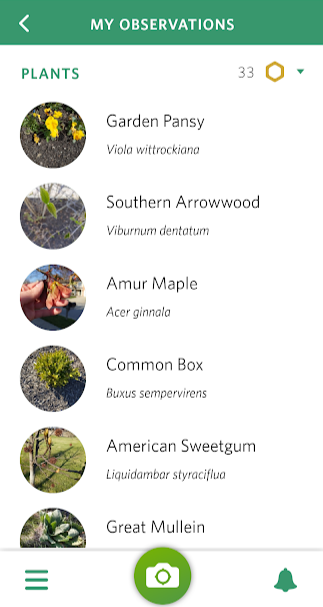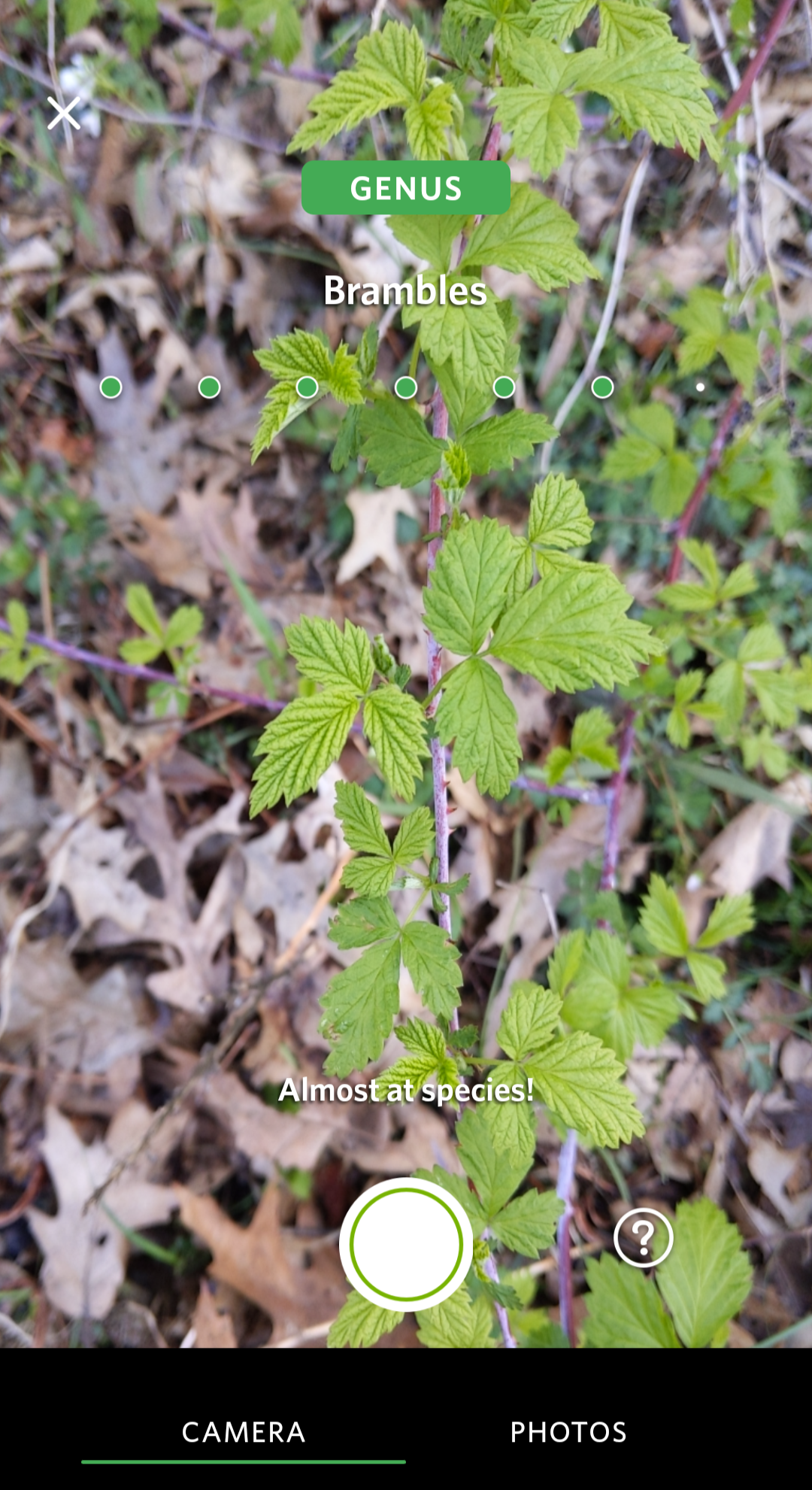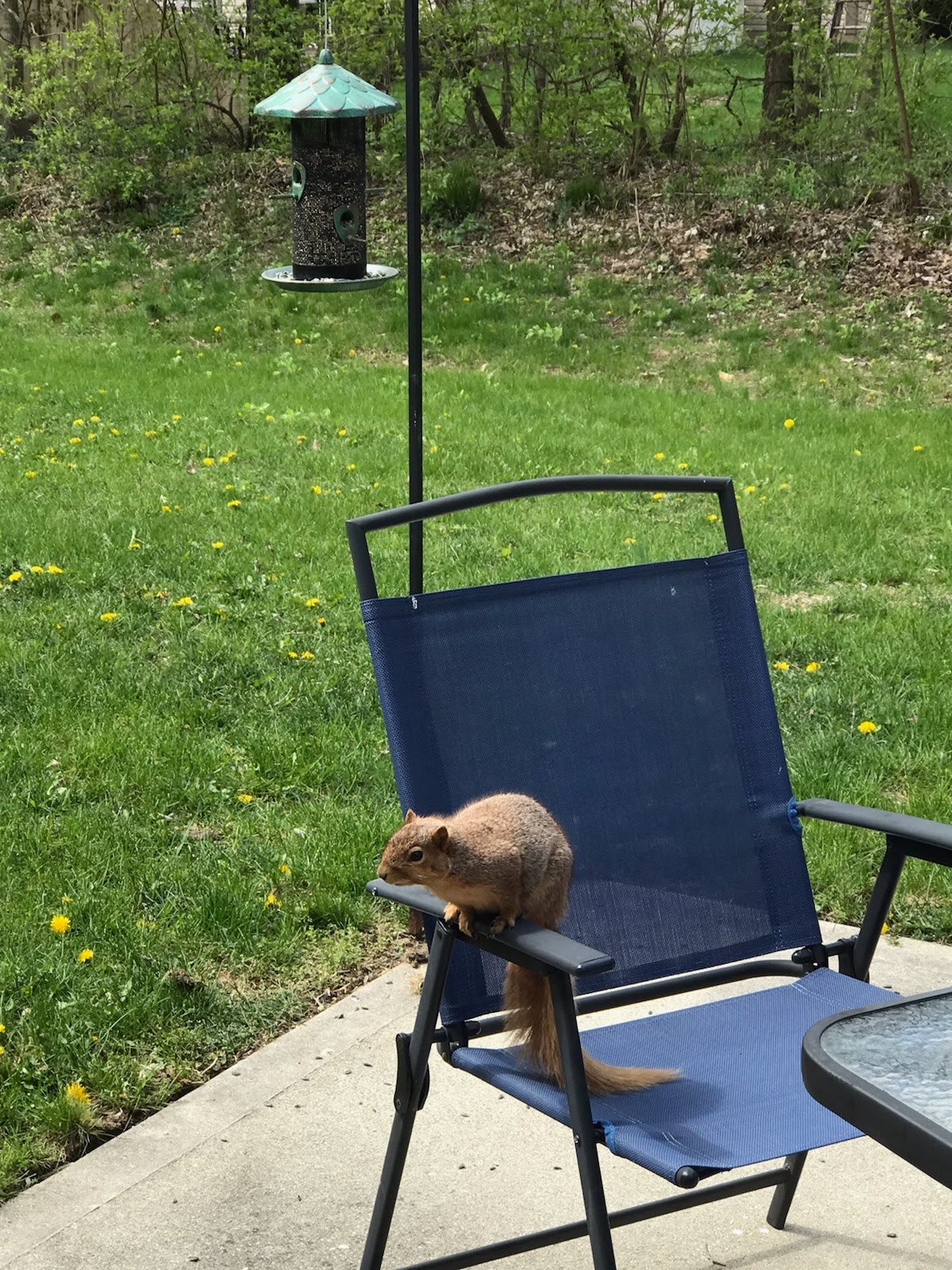Exploring Nature in Your Own Backyard
If you were to ask me a few weeks ago to name all of the plant species in my suburban Indiana neighborhood that I knew, I would have said grass, of course, dandelions, daffodils and some clovers. While I’ve always loved nature, I’ve just never had a means of learning about the species around me. Now, just a week after downloading a couple of nature apps, I’m up to 33 different types of plants! For this, I owe credit to the apps iNaturalist and Seek.
iNaturalist
The app store description states that iNaturalist allows you to “Observe and identify plants and animals with your friends,” but there are many bells and whistles to explore too. The overarching idea is to find, upload and identify pictures of new plants you come across. (You can also do this for animals, in which case I’ll applaud you for snapping a quality photo before they fly/hop/run away!) The various sections of the app are described below.
Uploading the species “Dutchman’s breeches” to iNaturalist.
New Observation
iNaturalist is built around observations, which is the fun part for those in quarantine looking for something social distancing-approved to do outdoors. While you can just explore other user content if desired, producing your own is a great way to contribute. You can upload a photo or sound and type in the species if you know its identification. The date, time and location will be automatically recorded if you’ve given the app permission. If you don’t know the species, don’t worry! There are several plant and animal enthusiasts out there waiting for your photo to pop up so they can help ID it.
Explore
The Explore page offers a grid layout of all of the recent observations in your location or another area of your choice. You can search for specific species or narrow down the selection to plants, mammals, insects, reptiles, fish, mollusks, amphibians, fungi, birds or arachnids. You can also filter the content by observations that need identification, are uploaded by certain users or have sounds if you’re into birds, for example. If you’re a pro yourself, you can validate other people’s identifications, suggest IDs or make comments.
iNaturalist’s Explore All page can be displayed as a gallery or map. (Shout out to whoever is making observations in Lake Michigan!)
Projects
This is where you can join groups of others, oftentimes geographically close to you, to collaborate in uploading species or compete to see who can observe the most. There are several variations of city nature challenges near me alone, so the chances are high that your city has many projects you can join too, or you can create your own with friends or family! For those who are competitive in nature, you can race to the top of the leaderboards for most observations made and most species observed.
Guides
If you’re interested in something even more comprehensive, there are several guides for different categories of plants and animals as they appear in various regions.
Activity
Any notifications related to your observations or those of observations you’re following will appear here, but so will relevant news articles like the timely “Exploring Nature When You’re Stuck at Home” that showed up in my feed or other global news from rare plants in the Atacama to assassin bugs in China.
iNaturalist’s Missions page suggests species in your area and challenges you to find them.
Missions
This is a great place to explore for anyone who is goal or task oriented. iNaturalist will suggest species that are common near your location and challenge you to observe them and then remove them from your list once found.
Seek
If you’re thinking “wow, this sounds fun, but I don’t know my species very well,” iNaturalist has a children’s app called Seek that does the identification for you! Once you find a new species, the app uses your camera to analyze it and narrow it down the ranks of the plant kingdom as much as possible. It is able to identify at the species level most of the time, though it sometimes stops at genus or family if it’s having trouble recognizing it. This way, you can upload your observations to iNaturalist with identifications to impress your friends or the wider plant and animal community! (If Seek can’t narrow down your observation, don’t be afraid to post it with whatever information you have or even no information. Again, there are plenty of people eager to help with unknown species.)
However, having iNaturalist is not a prerequisite to Seek, as Seek can stand independently of its parent app and also offers various challenges and badges to keep you motivated.
Seek trying to identify this species of bramble to add to My Observations.
The Gold Plant Badge is awarded for observing at least 20 plants.
Achievements
Seek awards several badges of varying degrees (bronze, silver, gold) as a fun way to help you explore nature. For example, there are badges for observing a certain number of plants, birds, amphibians, mammals, etc., as well as for completing monthly challenges.
Challenges
Similar in theory to Missions in iNaturalist, Challenges give you a goal to strive for, though they aren’t always based on finding particular species. Some examples of these tasks include finding ten new species, finding 20 new plants, finding ten trees or shrubs or finding five birds. There are also other suggested activities such as collecting and planting tree seeds, joining a citizen science project, recording how much water you use daily and even creating a “bug hotel.”
Feats and Failures
Seek is by no means perfect—it oftentimes knows much more than us, though it occasionally knows less. (I’m referring to a hilarious incident in which it mistook a squirrel in my backyard for a groundhog…) However, by and far, it is still a great means of plant (and usually animal) identification that has amazed me at how quickly it can identify species. On the opposite end of the spectrum as the squirrel mishap, it also astonishingly identified a chipping sparrow that stood still in front of me for a mere second, as well as a grainy robin that was over 20 yards away in my neighbor’s backyard.
Seek mistakenly identified this backyard squirrel as a groundhog (but it got me the Silver Mammal Badge, so I’m not complaining)!
Seek classified my 15 pound chihuahua, Astro, as a carnivoran.
Just For Fun
If you’re not finding too many species or just looking for bonus fun, you can always go through your own camera roll and upload old nature or animal pictures you have. It’s a little harder to get a match from a static picture, but testing Seek’s limits, especially with your own dogs or other household pets, can be just as enjoyable.
If you’ve been looking for ways like this to stay engaged in nature, chances are you’re already downloading the apps and are headed out the door to explore your yard or neighborhood. You’re likely to discover a new world of plants you had no idea existed and maybe learn a little taxonomy and identification along the way. My only warning is that you might get some strange looks from neighbors for squatting in common areas with your phone hovering over plants. If the thought of this is embarrassing, just play it cool and act like you were tying your shoe during your several mile run. Otherwise, don’t be afraid to tell them you’re exploring local flora and fauna and maybe they’ll be interested in doing the same!



